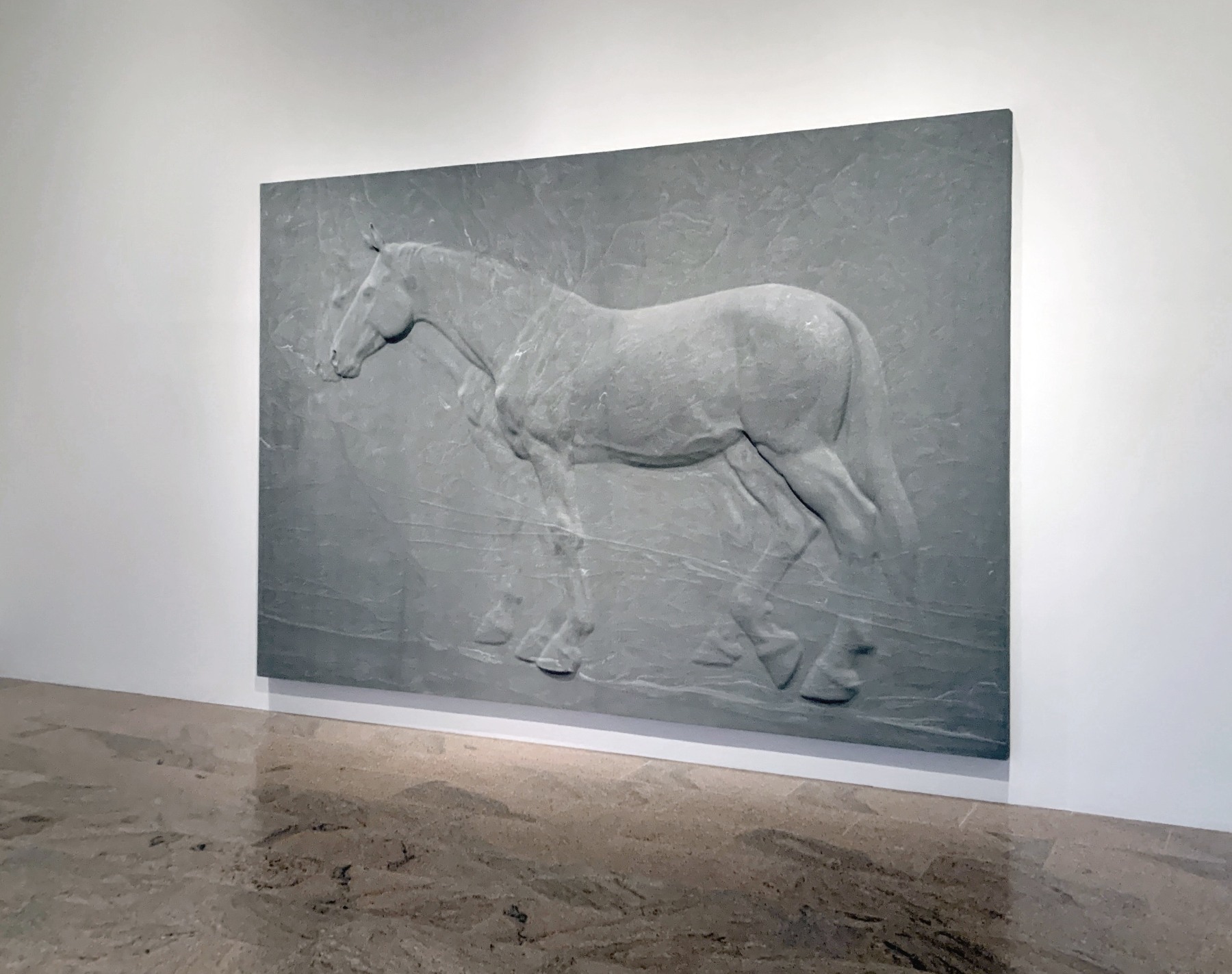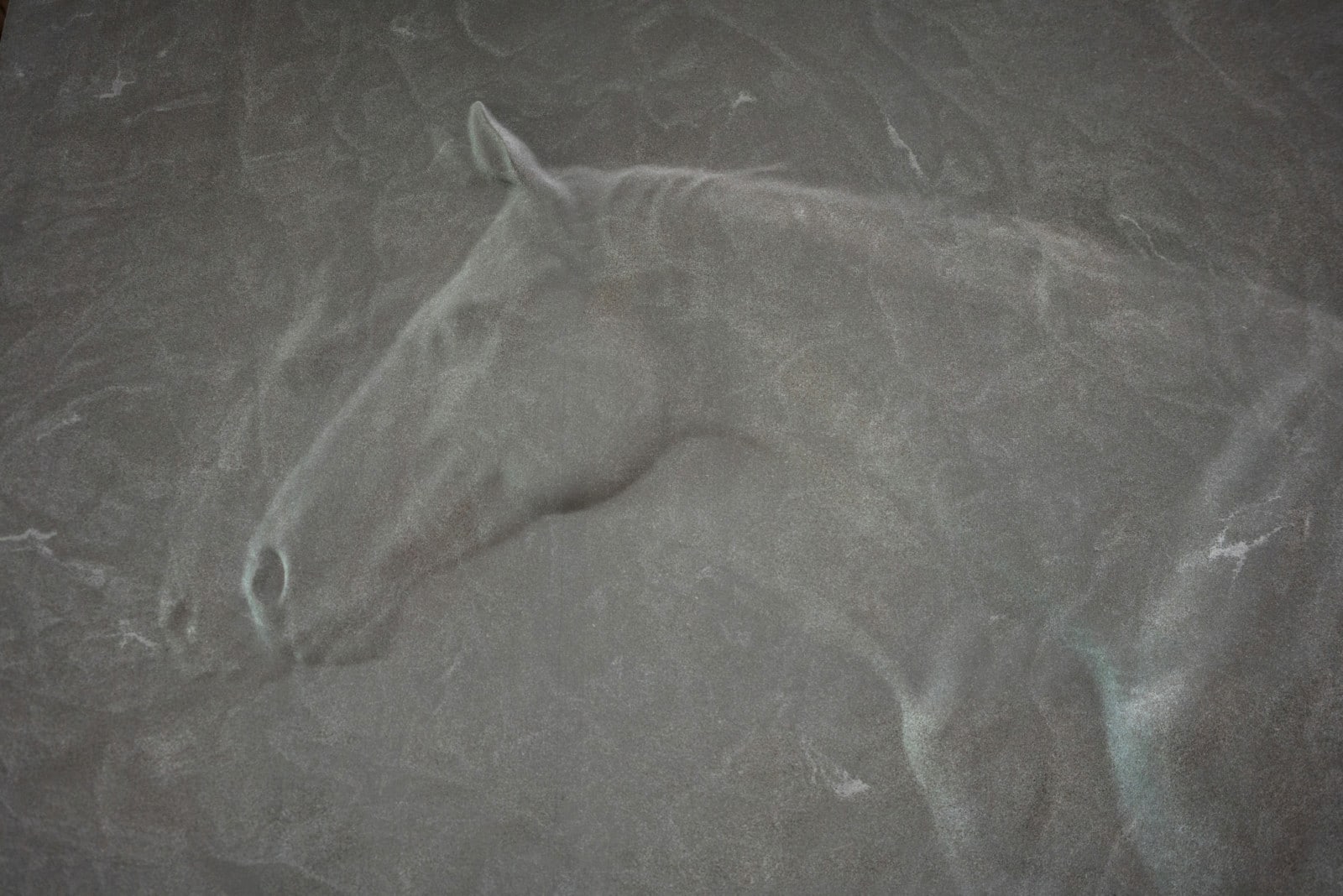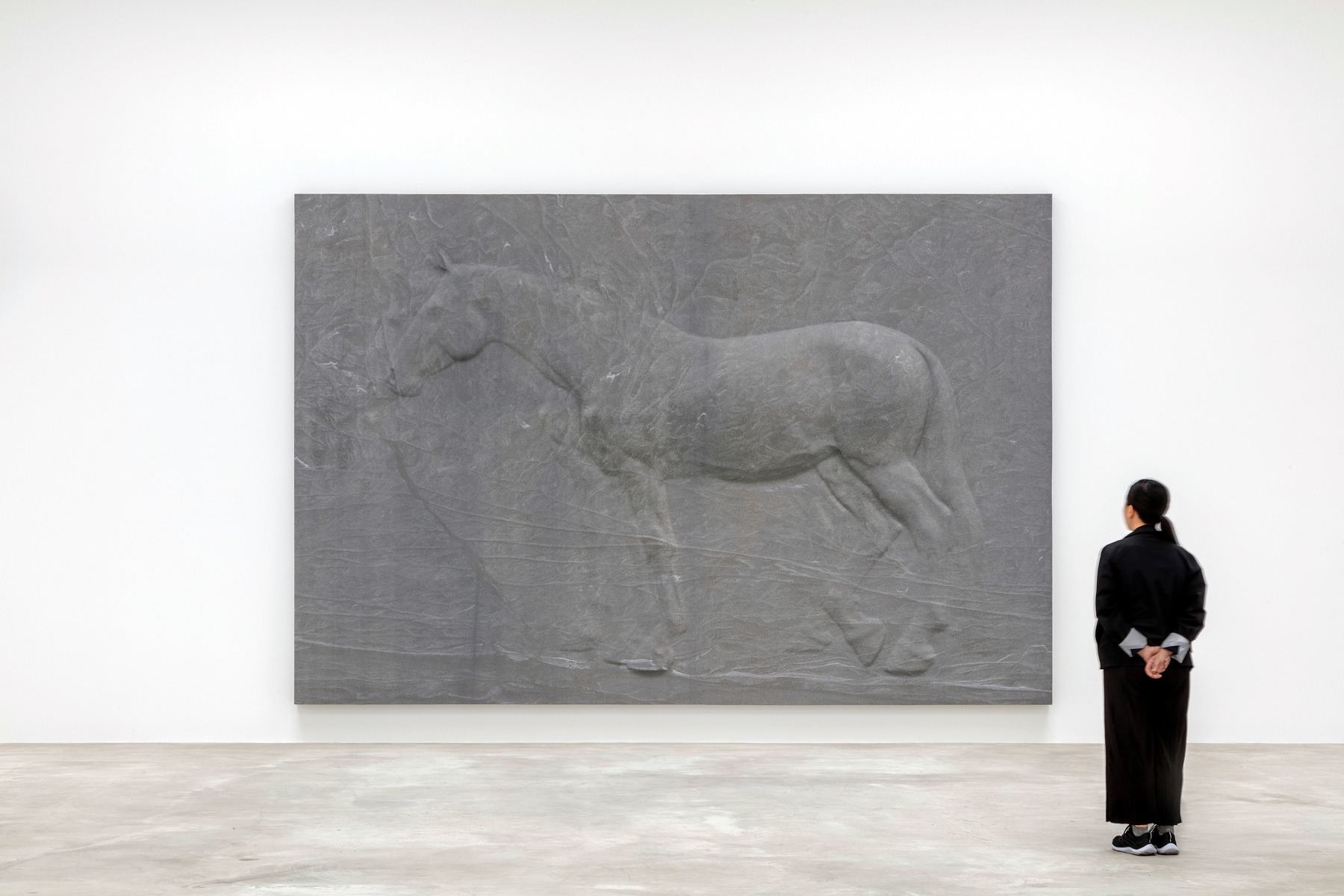
Two Horses
Artist: Charles Ray (American, born Chicago, Illinois, 1953)
Medium: Granite
Dimensions: 10 ft. 3/8 in. × 14 ft. 10 1/4 in. × 8 1/2 in. (305.8 × 452.8 × 21.6 cm)
Collection: Permenant Collection of the Metropolitan Museum of Art
On permanent view at The Metropolitian Museum of Art in Gallery 918
Excerpt from Metropolitan Museum of Art
“The monumental Two Horses is the first work made by Ray in granite. The ambitious relief synthesizes many of the artist’s long-standing sculptural interests while taking as its subject an equine form that is replete with art historical references.
Ray’s work is deeply invested in exploring at multiple registers the intertwined relationship between time and sculpture. Gestating for several years, Two Horses underwent a slow, painstaking process of drafting, testing and creating the image in different scales, and in a range of materials, with the artist eventually choosing a single specific block of black Virginia granite. Granite is an igneous rock formed by the slow cooling of molten magma, in the process creating interlocking crystals of feldspar, quartz, and mica which are apparent to the eye.
For Ray, this intrinsic quality of granite—a geological manifestation of the coursing of time through matter—lends it ideally to the production of a sculpture that meditates on this very theme. The Latin granum or grain that gives the stone its name offers vivid evidence of this evolutionary process of deep-earth disruption and its petrification. The rock’s inherent horizontal striations, which when worked through the sculptural articulation allow the material to feature as part of the composition, create a visually active surface, pulsating with incipience.


© Matthew Marks Gallery
Working with a master stone mason in Madison, Wisconsin, Ray initially had the work carved by a machine with a robotic arm and it was subsequently refined by human hand. The sculpture was modeled on a single horse which was then doubled, with the rear animal only partially visible. Close inspection of the work’s matte surface is intended to reveal traces of the process of the relief’s mechanical production. In this manner, the artist anachronistically combines cutting-edge technology with material originating at the birth of the planet, and by extension locates the period of human intervention and mortality in sobering, relative terms.
As Ray has observed, “A sculpture physically ages as it slips into time. Authorship, context and content fade away long before sculptural stone turns into sand.”
Read full text on Metropolitan Museum of Art website.

© Matthew Marks Gallery

